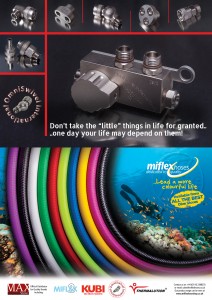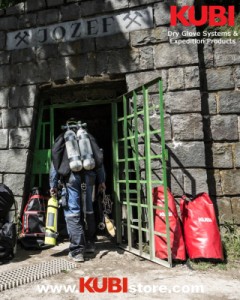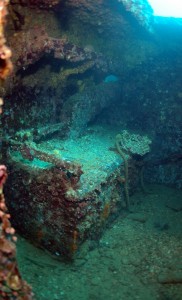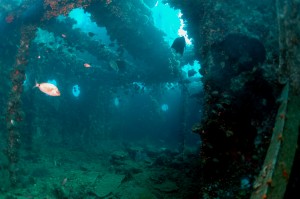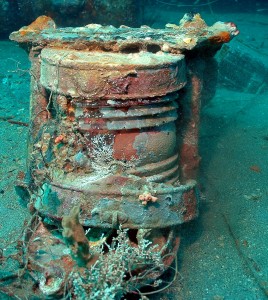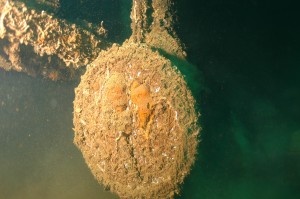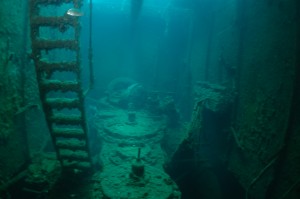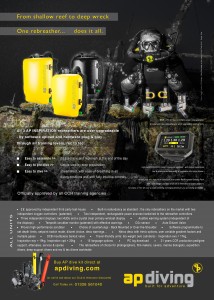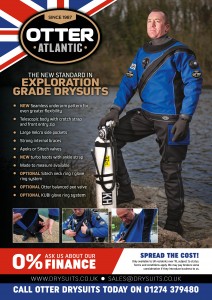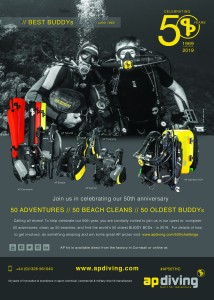DICTIONARY OF EGYPTIAN SHIPWRECKS- T
CTIONARY OF EGYPTIAN SHIPWRECKS- T
FURTHER DETAILS CAN BE DOWNLOADED FROM
www.KUBIstore.com & www.Miflexhoseshop.co.uk
MV TABA
For years this Russian transport ferry hung around Safaga, anchored above the Clark Chapman wreck in Scuttle alley. With no signs of life or movement she looked set to become another “accident” sinking at her moorings. She broke loose several times grounding on the sandbanks.
Then in July 2015 she was loaded with a cargo of containers and trailers bound for Saudi Arabia. On the 5th July she set sail with a crew of 35 on board. Shortly after leaving port she took on a heavy list to port and her cargo shifted, increasing the list.
The Egyptian navy were quickly on the scene , rescuing the entire crew before the vessel capsized and sank, sadly in deep water.
TILE WRECK; see M V MARCUS
TORPEDO BOAT TB56
The TB-56 was a TB-50 Class 2nd Class Torpedo Boat planned in 1878-9 possibly at Yokosuka NYd, Japan. The vessel was 52 Grt, 34 meters in length, 3.5 meters in beam, and 0.9 meters in draught. Steam powered by a single boiler which provided 650 hp output to a single shaft for a maximum speed of 20 knots. Armament was a single 42mm gun and two 36-cm torpedo tubes. Crew compliment was 16 men.
TB-50 Class 2nd class torpedo boats
The TB-46 foundered on 17 May 1906 off of Damietta (Dumyat) while in tow by the HMS Arrogant.
|
THE TAMARA 11
S.S TALODI &S.S.TAIF…
The S.S. Talodi and S.S. Taif were 1,585 and 1,590 GRT passenger/cargo ships built at Alexander Stephen & Sons Ltd., Glasgow, Scotland (Yard No.’s 521 and 520 respectively) for the Khedivial Mail Steamship & Graving Dock Company, Ltd., London. These two ships were ordered and built to replace the two larger Khedivial Mail S.S. Co. 5,800 GRT ships Famaka and Fezara upon their sale to the Australasian United Steam Navigation Company as a result of decreased passenger and mail traffic. The Khedivial Mail S.S. Co. was managed by Lord E. Hamilton at this time. The Taif was launched 17 May 1928 and completed the following June, and the Talodi was completed the following month.
The ships were steel hulled with 3 decks, the main deck being constructed of teak, and sheltered single-deck superstructure running from the 80-foot foc’sle to the 26-foot fantail. The ships were 236-feet 6-inches in length, 39-feet 4-inches in beam, and 16-feet in draught. Propulsion was provided by two 175-PSI oil-fired boilers and a triple-expansion steam engine built by Alexander Stephen & Sons Ltd., Glasgow, Scotland, which had a strock of 30-inches. The cylinders for the engine were 17.5″, 29″, and 47″ each which provided 181 NHP to a single shaft and screw for a top speed of 11 knots. The ships are also listed as having electric lights and a wireless direction finder (Pretty hi-tech stuff for 1928!). The ships had accommodations for 26 First Class passengers, 10 Second Class passengers, and could carry 490 Deck Class passengers.
At the time of completion the Talodi was registered in Alexandria, while the Taif was registered at Suez. The Taif would later be re-registered in Alexandria as well when the Khedivial Mail S.S & Graving Dock Co. was reorganized and reformed as the Pharaonic Mail Line in 1936.
The ships were homeported out of Suez and carried mail and passengers between the ports of Suez, Jeddah, Yambo, Tor, Port Sudan, Massawa, Djibouti, and Aden. Many of the ship’s voyages included carrying pilgrims from Egypt to Saudi Arabia for the Hajj to Mecca. One interesting aspect of these trips to Mecca was that before departing on the pilgrimage, everybody onboard the ships was inspected and vaccinated for smallpox and cholera, a serious health concern at the time, by the Suez Quarantine authorities. Upon returning from Mecca, the ships were again inspected and placed in quarantine if passengers were found to be infected. Once the ships were determined to be disease-free, “Certificates of Measurements” were issued to the ships, after which they could continue service. This practice continued well into the 1950’s.
In 1941, the Pharaonic Mail Line changed it’s name to the Khedivial Mail Line and the ships continued service on the same routes without major incident until, on 13 April 1958, the Talodi collided with the HMS Bulwark while carrying approximately 120 pilgrims to Mecca. The HMS Bulwark has been struck a glancing blow on the forward starboard quarter and received only superficial damage. However, the Talodi’s bows had been crumpled in, shortening the ship’s length by possibly as much as 15-feet, the foremast had fallen, and the ship’s anchors were lost. However, she remained seaworthy and was able to make it to port for repairs.
In 1961, the Khedivial Mail Line was nationalized under then president, Gamal Abdel Nasser, becoming part of the United Arab Maritime Co. where both ships continued service in the Red Sea.
During the War of Attrition, the city of Suez and Port Abadiyeh, were virtual ghost towns due to regular and frequent bombings by the Israeli Air Force. Both the Talodi and Taif were bombed and sunk at Port Suez during this conflict. Possibly during the Israeli Operation Boxer in which approximately 500 air sorties were conducted between 12 and 28 July 1969 in which targets along the Suez Canal were repeatedly bombed. No additional information concerning the sinking of these ships has been located to date. However, it is highly probable that the ships were either salvaged or broken up and removed during the clearing of the Suez Canal in 1974 and 1975.
THE WRECK OF THE S.S. TAIWAN
While searching for the Maidan during those early expeditions we dived extensively around Zabagad Island. Noting potential dive sites. During an encounter with a school of Hammer heads we noticed a cargo ship in 70 mtrs below us. She was a four hold vessel appeared upright and fairly intact. She was well beyond our reach. We surmised, wrongly that she must be the Maidan. Following the positive id of the Maidan we have another mystery wreck to identify.
Built in Germany in 1924 by Duetshe Werft AG. Hamgurghs for the North African Austrian Line (Wilhelm Wilhermsen,Tonsberg,Norway the 5500 TONS,426 ft long general cargo vessel was on a voyage from Basra to Gothenburgh, when she struck Rocky Island, she was refloated , but later abandoned and sunk close to shore on Zabagad Island on 14 march 1950.
The wreck is broken in two, starting at a depth of 60 mtrs down to 90 mtrs very close to shore and is an ideal trimix or rebreather dive.The location offers sheltered conditions for such an advanced dive.
H.M.S. TARA
The HMS Tara originally built as the 1,862 GRT steel-hulled steam passenger ship S.S. Hibernia. Built at William Denny & Bros., Ltd. (Yard No. 618), Dumbarton, Scotland for the London & North Western Railway Co., Dublin, Ireland, the ship was launched 10 October 1899 and completed on 12 January 1900 with a length of 100.3 meters and beam of 11.9 meters. Propulsion was provided by two triple-expansion steam engines and two shafts and propellers for a speed of 21 knots.
The S.S. Hibernia was ordered and built to replace older ships of the London & North Western Railway line on the Irish Sea Passage express route between Holyhead, Scotland and North Wall Dublin, Ireland. Upon her completion, the Hibernia immediately replaced the older ship S.S. Lily (built 1880) where she provided service on this passage, and later on the Holyhead-Kingston (later known as Dun Laoghaire) service for the better part of the following 15 years.
S.S. Hibernia at Holyhead
Soon after the outbreak of the First World War, the Hibernia was requisitioned by the British Admiralty on 08 August 1914 for use as an Armed Boarding Steamer and was recommissioned as the HMS Tara along with 3 other ships of the L&NWR Line and defensively armed with three 6-pounder guns. (For those that don’t know, “Tara” is Ireland’s previous name.)
S.S. Hibernia colorized postcard of the photo above.
For the first year of the war, Tara patrolled the waters off of Ireland and Scotland until being deployed in late October 1915 to the Mediterranean where she patrolled along the Egyptian and Libyan coasts.
On 05 November 1915 the HMS Tara, under the command of Captain R. S. Gwatkin Williams, was sailing off the coast of Sollum with a crew of 104 men, most of the men being from Anglesy, Wales. The ship was steaming along at 7 and a half knots when, just after 1000 the lookouts on deck and aloft in the crow’s nest, screamed that a torpedo was inbound. The ship attempted to avoid the torpedo, but due to the slow speed at which she was moving, the helm didn’t answer in time. At 1010 in the morning the ship was struck on the starboard side amidships by a torpedo launched by German submarine U-35 (Waldemar Kophamel), which surfaced after the explosion. The ship’s crew were able to man the 6-pounder guns and 9 rounds were fired at the submarine, all of which missed.
When the torpedo exploded it immediately ruptured the ship’s hull, flooding the engine room and killing the 6 personnel in the space, as well as 3 crewmembers who were in the cabins located above the engine room. One of the ship’s 4 lifeboats was also lost in the explosion, with the remaining lifeboats being able to be lowered over the side where 93 of the 104 man crew were able to abandon ship.
The Tara took approximately 7-8 minutes to sink by the stern approximately 8-miles off Sollum.
Meanwhile, the U-35 had surfaced and approached the men in the lifeboats flying the German flag. U-35 moved through the wreckage of the Tara’s sinking with its gun trained on the lifeboats without attempting to rescue any men in the water, leaving that to the ship’s crew.
German Submarine “U-35” (date unknown)
The U-35’s commanding officer, Korvettenkapitän Waldemar Kophamel, ordered the Tara’s lifeboats to be taken in tow and for some of the ship’s crew to onto the submarine’s deck to lighten the overcrowded lifeboats. The U-35 then towed the lifeboats and crew to Port Soliman (Bardia) approximately 8-miles away, picking up the body of a cook along the way. Prior to entering the port channel, the U-35 lowered the German flag and replaced it with the Turkish flag. Upon arrival at the port, the crew of the Tara was then turned over to Turkish authorities. And this is where the real saga of the crew of the HMS Tara begins……
The ship’s crew buried the body of the cook and were given some food, water, and clothing by the U-35’s crew before being turned over to the Turkish authorities. The Turkish authorities turned to prisoners over to members of the local Senoussi tribe junder the command of a Turkish Officer, Nouri Basha, and were made to march into the Libyan Desert over the next few days, sleeping in the open desert and given very little food. They eventually joined other Senoussi prisoners, survivors of the sinking of the S.S. Moorina (sunk off of Crete 05 November 1915) during these first few weeks. The Tara’s crew would spend 135 days in captivity near Bir Hakkim, Libya, with four men dying during this time. They would eventually be rescued in a daring operation on 21 March 1916 in which the Duke of Westminster, leading a force of men from the Yorkshire Yeomanry, with 9 Rolls Royce armoured cars, 10 ambulances, and 20-plus other vehicles, raced across 120-miles of desert, avoiding the Senoussi tribesman, and rescued the the captive survivors of the HMS Tara and S.S. Moorina without suffering any casualties during the rescue.
Survivors of the “HMS Tara”
The rescued men were suffering from dysentery, hunger, dehydration, lice investation, and various other ailments, were considered to be in reasonably good health considering their situation. They were then transferred to the British hospital in Alexandria where they remained until they were fully recovered from their ordeal.
M .V. TEXACO CHRISTOBAL- correct name is MV CRISTOBAL!!!!!!!
A Panomanian motor tanker, built in 1945 for the Pan American Oil Co,as the MV TANDORA, serving the US government for 3 years before she became the MV MARVEL.
Built by JA JONES CONSTRUCTION CO, with engines by Noedberg of Milwalkee she was 3250 tons, 286 ft long with a 46 foot beam.(91m x 14,6 x6.6) In 1948 she became the MV CRISTOBAL and owned by Texaco/Panama Oil Co. In 1960 she became the M.V TEXACO CRISTOBAL.
She sprang a leak while carrying oil samples off the Morgan 2 Oil well, on the 23rd Feb 1967.Her engine room flooded and she sank without the loss of life. All 20 of her crew were rescued.
The wreck lies on her port side in 30 mtrs on a sandy bottom and is virtually intact. Her tall funnel lies on the seabed at the rear of the vessel where the engine room can be found. A pipebridge runs to the centre island and forward bridge area, navigation deck and wing bridges with another pipebridge connecting to the foc’sle. and is covered in fish life. Her foremast runs out at full length while the cental mast stick out through the pipebridge a couple of meters. Most of her portholes remain in place.
She swarms with sweepers and glassfish, while there is some evidence of soft corals she is not as well decorated as other wrecks. There are many levels to explore in her two superstructures, eith workshops accommodation and storage areas all accessable.
S.S.THISTLEBAN:
The Thistleban was a cargo ship of 4,117 Grt built at Craig, Taylor & Co., Ltd. (Yard No. 141), Stockton for the Albyn Line, Ltd. (Allen, Black & Co.), Sunderland. the ship was launched 25 June 1910 and completed the following month. She was 112.8 meters in length, 15.7 meters in beam, with a single screw and a cruising speed of 11 knots. Requisitioned for by the British Admiralty for war service and defensively armed.
On 23 December 1916, while on the Karachi-Hull route carrying a cargo of rape seed, linseed, and peas, the Thistleban struck a mine, or mines, 5 miles North-Northwest of Alexandria which had been laid by the U-73 (Gustav Seiss) the previous day. The ship was beached on 24 December and declared a total loss.
S.S.THISTLEGORM
THE BIRTH OF A LEGEND
The Thistlegorm story starts at the Yards of J.L. Thompson and sons at Sunderland, for the Albyn Line. It was here that the 4898 ton 415ft cargo ship was built In 1940. Her was driven by a triple expansion stream engine, built by North East Marine Engineering, which could deliver some 1850 hp driving her along at 10knots.By September of the next year she had completed her trails and had completed three voyages America (aircraft( Argentina (grain), and The Dutch Antilles (rum and can sugar). Each vessel carried the emblem of Scotland , the thistle which formed the prefix of each vessels name followed by a Gaelic word thus DHU GORM, GLEN, NUIR
She was quickly requisitioned by the navy and armed with the guns, prior to her second voyage, which she still carries today -world war one vintage.
Her final journey started in Glasgow after a two month lay up due to boiler trouble, where she was loaded with a cargo that contained rifles, munitions, aircraft parts, Wellington boots, trucks, motor bikes and tunics for the Eighth Army in North Africa.
Even two steam loco’s, tenders and rolling stock were loaded onto her deck. These were for the Egyptian railways and had been built in Glasgow at the North British loco works at Springburn.
The voyage to what was to be her final resting place was a long one. Germany had control of virtually all the Mediterranean, so the vital supplies she was carrying for the 8th Army had to transported via the cape and up the Red Sea .She left the Clyde on the 5th Sept and proceeded without incident to Freetown, South Africa, before rounding the Horn, passed Madagascar, through the Mosambique channel, until she reached Aiden where she bunkered for two days. Here she was escorted up the Red Sea by the HMS Cairo to the anchorage in Sha’ab Ali. Here she was delayed for 10 days due to the wreck of the Tynefield blocking the entrance to the Suez Canal. Here fate was to deliver divers one of the most fascinating wreck dives outside of Truk Lagoon.
THE CARGO
In Addition to Wellington boots, generators trailers,2 armoured cars, lee Enfield Rifles and aircraft parts, the Thistlegorm’s cargo consisted of the following;
STANIER 8F 2- 8- 0 LOCOMOTIVE
The Stanier 8F steam locomotive was perhaps the work horse of the rail network in the 30’s and 40’s and indeed over 200 of the 852 made, were exported to the Middle East. Designed by Sir William Stanier , her 2-8-0 numbering refers to her wheel/ axel layout- one front bogie and 3 drive axels. The coal tenders and water tank cars made up the locomotive, the water tank cars extending the engines range by provided an extra supply of water for desert operations. Two of these and not 3 were loaded onto the ship
BSA M 20 MOTORBIKE
A staggering 126,000 of these motorbikes were produced during WW2 and were used by dispatch riders. They were assigned to Field Marshall Auchinleck, who was in charge of the British troops fighting the desert fox-Rommel
MATCHLESS G3L MOTORBIKE
The Matchless G3L was a two-seater single cylinder motorbike, with a 4 speed foot change gearbox. Designed for desert use, it was later to become a domestic vehicle in the form of the G3Clubman.
NORTON 16 H MOTORBIKE
The Norton 16 h was very similar to the BSA motorbikes, and was again specially designed for despatch riders in the desert campaign. So successful was the design that 100,000 were manufactured during World War 2 alone.
BEDFORD MW; Built on a 15cwt chassis, with a 6 cylinder Bedford engine, they were versatile lightweight .
BEDFORD OY; With almost double the payload of the MW, the Bedford OY 3 ton truck was the mainstay of the British Army, with some 72.000 produced
MORRIS COMMERCIAL CS8; Easily recognizable by it’s distinctive bonnet, these trucks were fitted with Ford 8 cylinder engines
FORD WOT 1; The largest of the vehicles in the wreck, this double axel truck was used for heavy payloads and was over 20ft long. Only a small number of these vehicles were produced for the army.
FORD WOT 2; One of the most commonly used trucks, some 60,000 being produced, the 15cwt vehicle was generally fitted with planked tray and canvas top.
FORD WOT 3;Larger than the WOT 2, this truck was fitted with a ford V8 engine 85hp,with some 18,00 seeing military service in WW11.
TILLING STEVENS TS19;The largest of the 4 wheel trucks in the wreck, at 6.4 mtrs long, they weighed some 400kg and could carry a substantial payload
UNIVERSAL CARRIER; Of the 30or so loaded originally,3 of these small multi-purpose tracked vehicles can be seen in the debris field between the two sections of the wreck. Built by Vickers Armstrong. They were used as infantry support and the common variant were usually fitted with a 303 Bren light machine guns hence their nick name “Bren Gun Carriers” they were powered by Ford V8 engines and could reach speeds of 48km/h. they carried up to 5 persons.
Other cargo known to have been loaded according to Waymes load list included 16 Lysander aircraft, a pair of light pundits, an immense amount of ordinance, 4 water rail cars to compliment the loco’s and Bedford Ambulances.
For a more comprehensive report on her cargo see
“75 YEARS UNDERWATER”
The sinking
A flight of German Bombers having failed in their mission to find and sink the Queen Mary, then being used as a troop ship looked for a secondary target and found the Thistlegorm After straffing the ship , the circling Hienkel 111 dropped two bombs which hit the aft holds which were carrying the ordinance. The initial and secondary explosions almost ripped the ship in two and sent both steam locos hurtling through the air. Her fate was sealed and as she sank the crew abandoned ship and were taken on board the “ S.S Salamanua” and “HMS Carlisle” The explosion also caught the fleeing bomber, which eventually crashed a few miles to the north. Nine of the crew were killed. The date Oct 6th 1941.For the crew this was to be the start of their misery. Not only was their pay stopped but they had to make their own way home.
SURVIVORS ORDEALS
ANGUS Mac LEAY
“I was about to jump when I saw one of the gunners lying unconscious flames all around him. I managed to get the man onto my shoulders across the burning deck and into the life boat”
HRRY BANSALL
“H.M.S CARLISLE was anchored close by, the two lifeboats reached its side as the light from a tremendous explosion turned night into day. Broken in two by the blast she sank below the water”
JOE DAGG
“as I ran over the red hot deck a locomotive hurled through the air disappearing over the port quarter”
JACK BLAIR
“When Captain Ellis came on board we did a head count and five gunners and four sailors had gone down with the Thistlegorm”
NORMAN ELAND DUNN
“I was awakened by the thudding on deck and the sound of two heavy explosions. The afterdeck was in flames it was impossible to get to the boat deck The plane came round again and dropped a bomb which exploded in the water and machine gunned us. We jumped overboard”
DENIS GRAY (from the HMS Carlisle) “ We could see the se planes coming in very low and very fast, if they had their wheels down they would have hit the mast”
Gunner Glynn Owen “ I saw the hammock above my head catch fire I could see the whole ship was on fire ,I thought my family will never know how I died”
CAPTAIN WILLIAM ELLIS
“On 6th October 1941 at about 2am, while the vessel was at anchorage F in the straits of Jubal(Gobal) with other vessels under Naval Control, I was awakened by the sound of explosions. I immediately went on deck and found the vessel had received a direct hit from an enemy bomber. The after part of the ship was enveloped in fierce flames and I realized right away there was no hope of saving the ship”
“Orders to abandon ship were given as the crews quarters were aft the sailors and firemen of the watch were cut off from the boats Two boats were launched and the men whose quarters were amidships were safely got away. My boat drifted aft and was successful in picking up three or four men who had jumped overboard”
THE WRECK TODAY
The wreck has now been extensively dived and diver overload has taken its toll. Thoughtless mooring by dive masters to the handrails means they have long since gone along with their soft corals. The front boiler cover of the port steam train has now fallen off, the port deck above number I hold ha s collapsed, threatening to sent a water bowzer down into the hold,(as it has for years) flattening trucks bikes and rifles, Sadly the last remaining paravane on the starboard side has been destroyed-again through thoughtless mooring-the water bowser having been lifted and then dropped onto the towing array. All but a few of the portholes have disappeared. Never the less, The Thistlegorm is still a superb dive.
Dropping onto her bow is quite a site, her starboard anchor chain plunging down to the seabed below. Swimming over the foc’sle railway stock flank number one hold.
Dropping down through rows of trucks and motor bikes, it is possible to continue aft to number two hold passed “six packs” ofrifles and aircraft wings. Number two hold is full of more trucks, boots and gives access to the bunkering hold. This is very roomy and has a resident school of sweepers hovering in its upper reaches. Again moving aft, the wreck seems to disintegrate. This is where the bombs struck. Shells litter the collapsed hold and there are three universal carriers. Fifty feet to port sits the locomotive – bolt upright like her twin on the starboard side. All that remains is the smoke box-the boilers lie elsewhere and there is no sign of the engineers cab anywhere-as these contained many brass controls. Levers etc they may have been removed during a salvage operation.
The stern section lies over to port, and the aft hold has all but disappeared leaving piles of munitions scattered around. The 3.5″and anti aircraft guns still in place. Stern companionways around the weather deck make great swim throughs and more glass fish fill in the gaps. With care the rear accommodation area can be explored. Rounding the stern provides a view of her now motionless prop and rudder in 32 mtrs.
The return swim to the bridge section passes the triple expansion engine and here the force of the explosion can be seen –the deck is folded back on itself and above the galley hang sinks-upside down!. There are several access points to the bridge level, The radio room can also be located here Hidden under the upturned deck is the entrance to the galley, with it’s ranges still intact. Swimming forward now, along companionways accompanied by Batfish, Jacks, Snapper and Barracuda, the true splendour of the Thistlegorm can be experienced. Here amidst drones, masts, winches and davits swim all the resident Red Sea fishes, and tucked away safe from the constant finning action of divers there are still bushes of soft corals surviving. Visit the entire foc’sle before returning to the shot line.
The experience of night diving the wreck is not to be forgotten .Torchlight reveals the Red Sea in all her glory, the coral encrusted metal alive with invertebrates her hull a mass of anemones, and every vertical face alive with delicate shrimps, crabs and other invertebrates. Basket stars and urchins patrol the decks and huge shoals shelter in the holds. Her foc’s’le is often the home to a huge turtle.
As more and more divers visit the site it becomes more difficult to truly experience the wonders of this wreck. Dive at the wrong time and you will see only bubbles-groups of 12-16 being lead through the wreck like a daisy chain- often facing on coming traffic in a narrow passage. Who gives way to who?. Without a doubt visiting the wreck from a livaboard is the best option, thus avoiding the day boat rush. Early morning over the guns or late afternoon over the bows watching the fish gathering the current can be very rewarding.
Visibility tends to be best as the tide floods in from the Red Sea and poorest as it sills out over Sha’ab Ali
TIMING IS EVERYTHING!!!!!!!!!!!!
Currents can be very strong, but with carefull planning make an exciting dive and the fish life is at its best.
ALWAYS DECEND/ASCEND VIA MOORING LINES-EVEN IF IT’S THE WRONG ONE. And always carry a delayed SMB just in case……..This is a very busy site boats are coming and going constantly.
A COMPREHENSIVE 100 PAGE GUIDE IS AVAILABLE FREE FROM DEEPLENS
75YEARS UNDERWATER
S.S. TIBERIO
The Tiberio was a schooner of 237 tons built in 1902 and was utilized by the Italian Navy during WWII. On the evening of 31 December 1940 the Italian ships Maria Giovanna and Tiberio departed from Porto Bardia on coastal patrol sailing towards Tobruk. The ships were attacked and captured by the HM Destroyer Dainty and 3 other ships off Bardia after a brief gunfight. Both vessels were taken to Alexandria and commissioned as auxiliary ships (store carriers) in the British Royal Navy, but retaining their original names.
On 23 December 1941 the HMS Tiberio foundered and capsized in heavy weather off of Mersa Matruh. One casualty reported
M V TIMSFON (43151)
A small Egyptian supply vessel of 175tons, built in 1957, the M V TIMSUFON grounded sw of the Morgan oilfield. The impacted cracked the engine casing and she began to sink .She was taken in tow but later sank in 32 mtrs
TUGBOAT at Abu galawa
Very little is known about the history of this tug boat.it is not the Tiensien, HER TYRE FENDERS ARE TOO YOUNG The engine room has failed to give any clues in terms of her identity. There is strong evidence that she was converted from coal burning to oil, and that a pair of barges lying of Siyul Island and local skippers claim they were her charge. She has been connected with the Admiralty tug Tienstin, however the tyres used as fenders date back to the 60’s some twenty years after the Tienstin sank.
Resting on the edge of the reef, her keel in the sand at 14 mtrs this small wreck is great for photography, but large groups can hinder the experience. The natural light at this depth is superb and with a wide lens the entire shipwreck can be captured. Note the “cave” under the keel, picture right.
The tug boat serves as a great 3rd dive after a day’s diving on the deeper S.S. TURBO. She lies propped up against a circular reef riddled with caves, her bow just awash, and her stern lying on the sandy floor some 14 mtrs below. The keel forms a nice haven for batfish and an ideal location for a cleaning station .The wreck has a slight lean over to starboard and is totally intact. The wreck is totally covered in a coating of both hard and soft corals. All of her wooden decking has rotted away and this allows access into her small aft hold and hull. Forward of this is the engine room and then another small forward hold leading to the fo’c’sle. The engine room is compact but it is possible to explore two floors down with care.. The engine room has the added bonus of a school of glassfish.
The engine room is totally intact, complete with walkways, gauges, valves and stairwells connecting the 2 floors. And there is access forward to the small hold in front of the superstructure.
The forward hold has lost all its decking, leaving a skeletal framework which lends to some great images, which light shining through from above. Access into the interior can be gained from here with care.
. .
THE TUGBOAT AT SHARM EL MAYA
This thirty meter long fire fighting tug was sunk in 18 mtrs during the Arab //Israeli conflict and sits on a muddy bottom in Sharm el Sheikh harbour in an area known as Sharm El Moiya, currently right under the crane which could raise her so she could be moved to a more convenient spot.
The wreck is totally intact and lies with a list to port, and has a slight amount of coral growth. It attracts a reasonable amount of life including lionfish and morays, and colourful nudibranchs are often seen grazing on the algae.
The wheelhouse is accessible and down in the engine room, is the resident shoal of glassfish, and her deck fittings including fire fighting equipment are still in place. Given the depth and location this is any easy wreck to dive and is suitable for all levels of experience.
Attention should be paid to other boating traffic. The tug offers great photo opportunities with strong natural light , no current and few other divers to get in the way.
I have always thought that the wreck could be lifted and moved to a spot where it would be more accessible, near Ras Kati for example. It would serve as a great check dive, attract a lot of fish and soon become colonised with coral. One lives in hope-
S.S.TURBO
Built at Sunderland in 1912 by J.D.LAING for the Anglo Saxon Petroleum Co. the 4900 ton, 374 ft “contemparary plated, fitted for carrying liquid fuel in bulk, machinery aft”. The records also show her engine specification, built by DICKINSONS at the Deptford Yard as “3 cylinder triple expansion engine”, with cylinder dimensions of 26”,44”,72” and out-fittings by R. CRAGGS of HARTLEPOOL. She was a typical Centre Island vessel with sealed holds for and aft of the Island. Her engine room was situated at the stern of the ship. The indicated horse power was 2100, nominal being 443nhp. Surviving the Ist world war she continued her trade until 1940 when she was put under Admiralty service. Her weather deck, above the steering quadrant was adapted into a gun deck. She was armed with a 4” gun and 4 Hotchiss. She carried out num erous missions between Port Said, Haifa,Piraeus, Aden and Istanbul
The ships engine plate, which was to help disprove our earlier Identification of the wreck. In all 3 different plates of this type were recovered. The other two bore the names of her builder and her outfitters- JD LAING and RC CRAGGS. These are unique pieces of evidence and overrule any speculative conclusions.
THE ATTACK
On August 20th 1941 she was attached by German aircraft while en route from Haifa to Alexandria with a cargo of 7500 tons of Admiralty fuel. The crew including 3 naval and 7 military gunners numbers 52.The ship had left Haifa just before dark on the 19th August 1942
Captain J.B.JONES
“Weather on the afternoon of the 20th was fine with light air and we steamed at 71/2 knots steering a westerly course, zigzagging on no. 10. At 1745 A.T.S 35 miles from Damietta, we sighted two twin engine bombers heading towards us from the west out of the sun, which was then 2 points of our port bow .They were light blue, 50 ft above the water and flying one behind the other.
When they were in range we commenced firing with the Hotchiss, two of which were fixed on the bridge ,one forward and one on the f’o’csle head. We could not bring he 4” to bear at this stage.
The first plane when about ¾ mile off the starboard bow, dropped a torpedo which I saw approaching and I swung the ship hard astarboard. The vessel answered the helm and the torpedo ran harmlessly along the starboard side.
Meanwhile the second aircraft made a wider circle round the starboard side until he was ¾ mile on our starboard quarter, when he released his torpedo. The ship was still swinging to starboard. I saw the white wake and a second later it struck the vessel halfway between the bow and stern on the starboard side. There was a terrific explosion, a cloud of black smoke and a column of water was thrown at least 95ft, but there was no flame. There was a strong smell of cordite”
“We could now bring the 4” to bear and were able to get off one round as the plane flew off .We continued to fire the Hotchiss guns using all our ammunition except for 25 rounds. The planes continued to circle at a distance of 2 miles then flew off. 10 minutes later two of our own fighter appeared. The planes were Italian S79 type Bombers adapted to carry Torpedoes” SAVAOIA MARCHETTI S79TORPEDO BOMBER
“The ship rocked so badly after the explosion that I thought the ship was going to break in two, so I stopped the engines .The pump room and nos 3,4 and 5 holds were flooded, the deck was buckled on the starboard side between 3 and 4 tanks and there was a large hole in the ships side some 40ft fore and aft. There were cracks in the starboard side running from the main shear strake down to the bilge keel
THE Turbo had survived the attack, at slow speed they continued the voyage, and the captain found that by increasing her speed to 6 knots she stopped rocking, and they safely arrived at Port Said on the 21st August. Here part of her cargo was discharged and she continued through the Canal to discharge her remaining cargo.
Her armament was removed and she left Suez on April 1st 1942 for Karachi in tow of the GLADYS MOLLER (sister-ship of the Rosalie Moller) destined to be used as a fuel storage hulk.
On the 4th April as they neared Ras Banas (reported position puts them approximately 15 miles north) the ship broke in two, presumably from the damage sustained in the bombing, and
“cast adrift because of heavy weather. forepart sunk as it was a danger to navigation. Afterpart is presumed to have foundered”. Lloyds war losses
“While proceeding towards Aden, as a hulk, SS TURBO broke her back in a heavy sea Gladys Moller stood by, stern could not be boarded during the night of the 5th all contact with the stern was lost and the bow section sunk by gunfire on the night of the 5th by an unknown vessel under instruction form the Admiralty at Port Sudan”BT381/1919
Credit for the discovery of this wreck goes to the Skipper of Lady M. They called it the half wreck because it consisted of a stern and superstructure and one very large hold. At first we thought this was the Hadia, which had been described as a tanker in some records, but entering her engine room revealed a large single triple expansion steam engine, not a diesel as in the HADIA. Inside the engine room a plate with R.C. CRAGGS embossed and a works number would if fact prove to be something of a red herring in her identification., but without this knowledge to hand we set about looking for the missing section of the ship; the other half in fact. We were to search in vain…the bow lies in deep water somewhere to the north.
The stern lies in 27 mtrs on sandy seabed and in good conditions affords a spectacular view of this WW2 shipwreck. The hull lies close to the shore, where it presumably struck after drifting away from its tow.
The hull now lies on a sandy Bed in 28 mtrs very close to the reef face on its Port side. The starboard side is in about 18 mtrs while the port side almost touches the sand. The stern faces northwest. The break in the hull is from the rear of the centre island which sank with the fore section. The raised walkway runs aft to the engine room and accommodation island and the cross members are covered in corals and home to multitude of fish. The helm direction indicator is intact and stands proud on her aft deck and although her rudder was removed the prop can still be seen partially buried in the sand
The engine room is huge, easy to explore and totally intact. It is possible to explore three floors down into the heart of the ship Gauges, valves piping, dials notices, (one reads “water 1/3 above combustion when show in glass in all engines”) gratings and handrails are all intact. There are many storerooms off to the sides with tools and other equipment, much of which is concreted into place. and a workshop complete with lathe, even oilcans and watering cans! The engine room is very atmospheric with good light filtering through the skylights, although the angle at which she lies can be somewhat dis-orientating. Her repeater telegraph still hangs waiting for the next command. Forward of the engine room is her boiler room and the funnel casing, again all her fittings, gauges and valves are in situ. The stern area under the weather deck is an area of great interest with more store rooms, wheel barrows, spare ventilation cowls and some great swim throughs. A raised walkway supporting the vessels piping is home to a multitude of life forms from sponges to lionfish and the cross bracings make a great swim through and photo backdrop. The deck is an intricate latticework of pipes valves and fittings, used to transfer the bulk liquid fuel to her tanks in a delicate balancing act.The view inside the engine room is spectacular. The huge cavity above the chambers is illuminated from the open skylight ventilators from above. 3 flights of stairs run down into the workshops. These are quite narrow but accessible with care training and the right equipment. There are several store rooms where everyday items of life on board can be found, each with their story to tell.
Over the years a coat of golden concretion has covered most of the metal surfaces and the colour is revealed under artificial light. This makes the scenes very photogenic but a delicate balance of strobe light is required to get the right colour
In the lower levels there are work benches-check out the vice-,the repeater telegraph, machinery and access ladders to valving. The intactness of the entire engine room is staggering, evidence that slavage divers have not raped the wreck.
Care needs to be exercised with many overhead pipes, flywheels and cables. A good torch is essential despite the strong. ambient light.
There is so much to explore in the engine room and although the attitude of the wreck can be dis-orientating the large dimensions of the ship and the kind depths make it great to explore for those adequately equipped and trained
The stern lies listing to port partially buried into the sand, The gun mounts are still visible on the gun deck-sadly the guns were removed pre sinking, one central and the other offset to starboard. The direction indicator still sits in its binnacle. The photo shows the attitude of the wreck. Below the gun or weather deck, are the remains of store rooms and crews accommodation, the bulkheads of wood long since gone. Access hatches run down into the stoke hold where an old wheelbarrow sits waiting for its next load
The pipe bridge runs from the aft superstructure right to the break in the hull and like the many valves on the deck are covered in encrusting life and invertebrates. Lifeboat davits, handrails and stairwells provide alternative backdrops for photography.
Fascinating marine life including vast numbers of the Pixie Hawkish, a rare sighting anywhere else but here the Major Dominus of the wreck. Swimming along the pipebridge leads to the abrupt end of the wreck-where she broke in two and its easy to make out the construction and layout of the wreck where she is literally sliced in half. The sections of her tanks can easily be seen. It took us years of research to solve the mystery of the half wreck.
Although the visibility is less than stunning, the encrusting, macro and fish life and general intactness are a great incentive to dive her more than once. Sadly the aft mast which used to reach up close to the surface has been snapped in two due to thoughtless mooring by dive masters Fortunately this wreck is not visited very often most say it doesn’t exist presumably because can’t find the wreck. Perhaps that is what makes the wreck so very special. Darwinism at work!
The aft hold is also accessible with all the Deck structure missing, and the natural light offers some great photo opportunities.
SS TURKIA
The rumours of “a wreck north of the Thistlegorm” could well apply to this wreck. A very similar vessel sunk by explosion and indeed carrying war materials, the SS TURKIA has the potential of being the new Thistlegorm and could indeed bring prosperity to a very run down area of Egypt’s coast line. The area has its own calm settled climate and this wreck is diveable all year round. The added bonus is the amount of marine life it attracts and its discovery must eventually open up this area to some great new discoveries. Currently well out of the range of most safari boats based in Hurghada or Sharm, she is without doubt one of the very best wrecks found in sport diving depths –so far in Egyptian waters
THE SHIP
Built in Hull in 1909 as the LIVORNO(11)*,she was a schooner rigged steam cargo ship of 1671 tonnes gross, 300ft long and a 42 ft beam, clinker built by Earles Shipbuilding and Engineering Co.(yard no. 562) She was fitted with a reciprocating, triple expansion, direct acting vertical steam engine producing an IHP of 1000, making 9.5 knots, made by Amos Smith, also of hull. She has 4 bulkheads and a cruiser stern, single shaft and propeller.
She was built for Thomas Wilson Sons &Co, again of Hull.
FINAL VOYAGE
The Turkia’s final voyage began in New York in May 1941, where she loaded with a full cargo of “government stores”-she was bound for Pireus. The cargo included explosives, tyres, coils of wire, ingots, vehicles and firearms
THE SINKING
Two conflicting reports
“Bombed off Zafarana Light 2 miles SE May 14th 1941” – “Destroyed by fire and explosion near Zafarana Light Gulf of Suez, after being abandoned by her crew when on passage from New York to Piraeus with general cargo and explosives.”
“17/5/1941 she had a fire in no. 3 hold where explosives were stored (she was carrying explosives and general cargo) and the fire was beyond control so the vessel was abandoned. 10 minutes later there was a large explosion and the vessel sank in 12 fathoms. Nothing was being done (later that is) as no competent salvage service was available at Port Said.”-Anne Crowe Lloyds
This would explain why she is not in Lloyds War Losses as it sounds like an accident rather than enemy action. Indeed the hull would appear to be intact (from initial dive)and she looks as if she has settled slowly and upright.
Due to the Straits of Gibralta being closed off by axis forces her journey entailed entering the Red Sea at its southern end. She entered the Gulf of Suez and was proceeding north when, just off the lighthouse At Zafarana, fire broke out in number 3 hold and due to the nature of her cargo she was abandoned.10 minutes later she was rocked by an explosion and settled upright in 12 fathoms. Due to the lack of facilities at Suez no salvage was attempted. Due to the nature of her sinking she does not appear as a casualty of war, merely a wartime loss.
The saloon and ward rooms are full of evidence of her last port of call; crockery and bottles litter the floor.
THE DISCOVERY
Browsing through the wartime records I came across two separate entries for the sinking. One stated she had been attacked and bombed by enemy aircraft the other stated that she had sunk due to an internal explosion. Both agreed about her postion –near Zafarana Lighthouse in the Gulf of Suez,a long way north of RAS GARIB, our most northerly exploration of the Gulf of Suez so far.
A fisherman claimed to know her position. I decided to enlist the help of my good friend Basim ……… and put together a road trip. At Zafarana the only means of putting to sea available was a disused glass bottom boat, lying on the beach at the Zafarana Hotel. A10 minute journey took us to the target area, and with the shallow seabed of sand (24 mtrs,) the shadow of the wreck was soon located, rising up to within 10 mtrs of the surface. That was July 2007
DIVING DETAILS
The wreck sits upright on sand in 24 mtrs, with the bow facing towards the shore. The hull is intact, although some sections have holes appearing in the upper sections. Both masts have been cut below the water line and lie off to the side of the wreck. The surrounding seabed is littered with debris from the wreck and is patrolled by Jacks and Travellies.
Sitting proud and straight the bow appears out of a cloud of circling fish; The fo’c’sle hatch allows easy access into the crews accommodation; The frames of the crews bunks can still be seen.
The bow sits proud bathed in sunlight and is straight raked-same vintage as the Rosalie Moller. Clouds of fairley basslets swarm over the fo’c’lse head with its access hatches, hawse pipes, panama eye, triple cleats and windlass. Three deck houses sit at the aft section of the fo’c’sle, and there are coils of wire and vehicle tyres littered around. Mussels encrust most of the raised structures.
Entry into the fo’c’sle head can also be accessed from the main deck and leads to the seamans’ quarters-where bed frames can still be found
Holds 1 and 2 have two ‘tween decks with large numbers of tyres on the upper shelves. The deeper section of the holds contain wooden crates some containing hundreds of brass detonator caps. There are also hundreds of heavy rubber bases, their purpose a s yet not defined.Winches flank the holds, and in the second hold there are several vehicles, heavily encrusted, but appear to be cabs with extended chassis, possibly tank transporters
The superstructure has external companionways, all wood having long since gone, the rooms are easily entered. The saloon sits below the chart room, with a corridor running port- starboard. Flanking the engine house, running aft on the starboard side are the 1st mates room, bathroom, 2nd & 3rd mates accommodation, chief engineers quarters and finally the cooks quarters.
On the port side are the stewards quarters followed by the pantry, galley 2nd & 3rd engineers quarters. All are easy to enter and explore. The accommodation areas are littered with crockery and bottles; various inscriptions help to confirm her last port of call
“FLORIDA WATER, MURRAY & LANMAN, DRUGISTS, NEW YORK”
“SLOANS LINIMENT MADE IN THE USA”
“POISON VERGIF 8oz TALANA
They flank the engine room, and her triple expansion steam engine is easy to explore although the lower levels are filling with dead mussel shells and sand. The repeater telegraph is still in place. A platform of grating walkways forms a gallery around the cylinder head, with an auxiliary boiler aft.
Behind the engine house there is access into the no. 3 cargo hold, again with 2 ‘tween decks with more of her general cargo in view. Number 4 hold is totally full of mortar shells, which have totally concreted into the hold, still in their cases, the outlines of which can still be made out. Behind this hold is a narrow hold giving access to the stern store rooms, and steering house. The steering quadrant is located on the poop deck-and nearby a coral encrusted compass binnacle stands proud.
The cruiser/ fantailed stern leads down to her rudder and prop-shrouded with a fishing net at the time of writing-the blades are covered with soft corals.
The wreck is covered in a unique eco system of soft fan corals, nudibranchs and schooling reef fishes. Large schools of juvenile yellow tailed barracuda swarm over the wreck, cascading in an endless waterfall over the sides of the ship, down to the sea bed and back over the deck, often blotting out the sunlight.
To date we have made 8 expeds to the wreck and the marine seems to get better each time .During our 2013 trips we could not see the wreck for dense schools of Barracuda-which not only cascaded down the side of the wreck but also filled the holds.
The invertebrate life is indeed unique. We found two 9” seahorses on our last visit.
GERMAN DISCOVERY.
You really have to laugh. It would seem that a recent German operator has announce that she has found the Turkia (September 2013) 7 years too late.
S.S.TYNEFIELD
The Tynefield was built in 1926 by J Laing & sons for the Hunting S.S. Co. She was fitted with oil burning engines, 5856tons, 395 ft long, with a speed of 11 knots. She had almost completed her long journey to Alexandria, when as she entered the Suez canal she struck a mine and sank, killing 8 men . Captain Carr was amongst the survivors. The date was October 5th 1941. A convoy following a mere day behind was ordered to lay anchor at the entrance to the Gulf until the obstruction was cleared. Amongst this convoy were the Thistlegorm (sunk the next day) and the Rosalie Moller sunk a few days later
T43 EGYPTIAN MINESWEEPER
NAME
PLA Official Designation: N/A
NATO Code-Name: T-43
BUILDER: Wuhan Shipyard, Guangzhou Shipyard
INVENTORY: Between 30 and 40 units are believed to be in service. Some have been stripped of sweep gear to serve as patrol ships.
PROGRAMME
T-43 is a standard Soviet-design ocean minesweeper, although most or all of the current group were indigenously built by the Chinese. The ship can also be used for patrol and mine laying missions.
SPECIFICATIONS
Displacement: (full load) 590 tons
Dimensions: Length 60 m; Beam 8.6 m, Draft 21.6 m
Propulsion: 2 diesels, 2,200 bhp; 2 shafts
Speed: 14 knots
Crew: 70
Sonar: Tamir-II hull mounted HF
Guns: 2 manual dual-37 mm AAA; 2 manual dual-25 mm AAA; 2 manual dual-12.7 mm AAMG
Depth Charges: 2 X DC mortars
MA Russian built, type T-43 minesweeper, 58 mtrs long, 580 tons, while at anchor in the Minkar channel Hurghada, this minesweeper was attacked by a squadron of Israeli Phantom jet fighters on Feb 6th 1970,. For many hours the Egyptian crew fought off the fighters, which returned several times after refuelling and re arming. Brave attempts to replenish the minesweepers ammunition failed and with her guns silent, she was struck by a bomb and sank below the surface. As the Israeli fighters turned for home, the ship resurfaced, the fighters attacked again, this time sinking her for good. Eye witness accounts tell of the enduring fight and the bravery of her crew.
The bomb damage is found just aft of the bow and gives access into the forward section of the ship, and a corridor running right through the vessel with rooms running off and access to the engine room. The corridor has several exits running upward, but a deep penetration should only be attempted by fully equipped and experienced divers. There is evidence of ship life-beds, medicine cabinets communication equipment –and a lot of silt!
The exterior still has much of interest the wreck still bears the guns she fought with, and ammunition boxes lie scattered on the sea bed.
There is also much evidence of the ships purpose-sonar domes fitted in the hull, drones lying in the companionways and huge cable drums for the towed arrays. Several mortars are bolted to the deck amid ships and all the usual deck fittings are still in situ. The twin props and rudders are also still in place, but are often wrapped in mooring ropes
